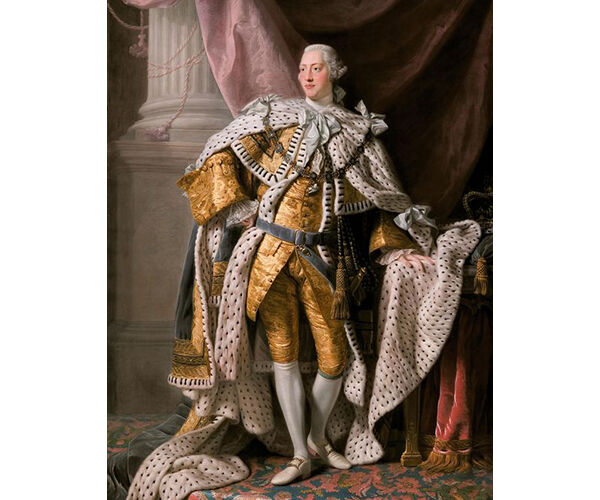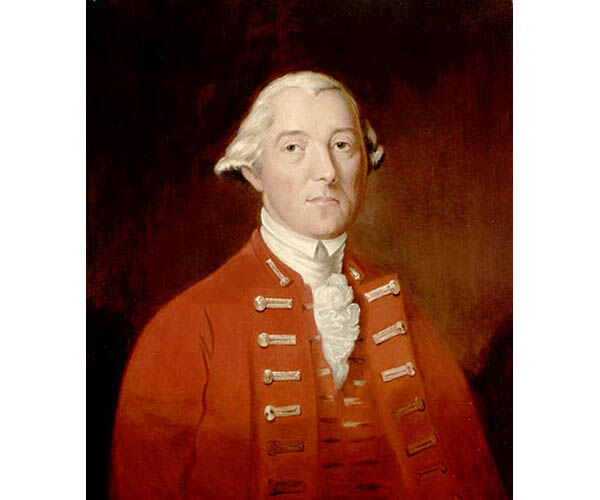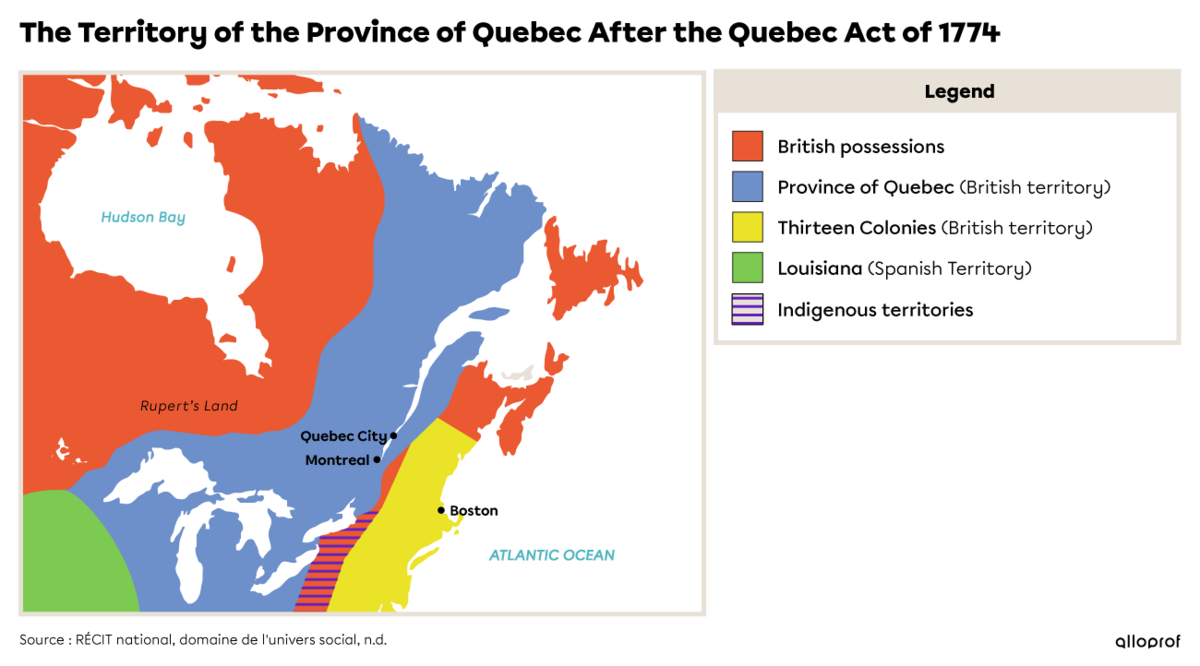The war between Great Britain and France from 1756 to 1763 severely damaged both sides economically. To fill its coffers, the British Parliament adopted numerous laws in the subsequent years to tax the inhabitants of the Thirteen Colonies. This situation angered the colonialists, who felt that they were paying too many taxes to a country that did not consider their opinions very often when it came time to make decisions that concerned them.
While discontent in the Thirteen Colonies grew, King George III of Great Britain wanted to make sure the Province of Quebec remained loyal. The colony’s governor, Guy Carleton, had the same opinion about the Canadiens as his predecessor, James Murray. He also thought that it was necessary to be conciliatory towards Francophones to keep the peace.

King of Great Britain
Source: King George III in coronation robes [Painting], Ramsay, A., circa 1765, Art Gallery of South Australia, (URL). (Rights reserved)*

Governor of the Province of Quebec
Source: General Sir Guy Carleton [Painting], 1923, Library and Archives Canada, (URL). Acc. No e011165560
In 1774, Carleton convinced George III, who provided his sanction to Parliament so it would adopt the Quebec Act, a new constitution favourable to the Canadiens.
| Executive power |
|
|---|---|
| Legislative power |
|
| Judicial power |
|
| Social aspect |
|
| Territorial aspect |
|
Various social groups were affected by the Quebec Act since this constitution resulted in many changes in the colony.
The Quebec Act was generally well-received by the Francophone population. The elite, the Clergy and the whole population were satisfied with the return of elements essential to Francophone culture. French civil laws, tithe and the seigneurial system directly impacted the daily life of the colony’s habitants. The end of the Test Act also allowed some Francophones to aspire to administrative positions.
Some British merchants viewed the Quebec Act favourably since the Province of Quebec’s expanded territory meant new opportunities for the fur trade. For others, the Quebec Act was an insult. The complete reinstatement of French civil laws, which also applied to British merchants, resulted in the corresponding loss of the English civil laws they had always used. In addition, the promised Legislative Assembly that existed in all British colonies was not going to be implemented.

The Province of Quebec’s new territory included Labrador, the Great Lakes and the Ohio Valley.
The Thirteen Colonies were already irritated by Great Britain’s past decisions, especially the imposition of new taxes, and saw the Quebec Act as an insult. They had wanted the Ohio Valley since the War of the Conquest. Despite this, the territory had been ceded to Indigenous peoples. In the end, the new constitution gave this territory that the Thirteen Colonies desperately wanted to the Canadiens who had been a part of the British Empire for a much shorter period. This is why the decision was unacceptable in their eyes.
The Quebec Act was one thing that triggered the American Revolution.
Ramsay, A. (circa 1765). King George III in coronation robe [Painting]. Art Gallery of South Australia. https://www.agsa.sa.gov.au/collection-publications/collection/works/king-george-iii-in-coronation-robes/24192/ *
*Extrait employé par Alloprof conformément à la Loi sur le droit d’auteur dans le cadre d’une utilisation équitable aux fins d’éducation [https://laws-lois.justice.gc.ca/fra/lois/c-42/page-9.html]
General Sir Guy Carleton [Painting]. (1923). Library and Archives Canada. https://www.bac-lac.gc.ca/fra/recherchecollection/Pages/notice.aspx?app=fonandcol&IdNumber=2837442